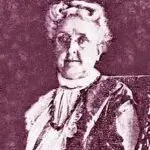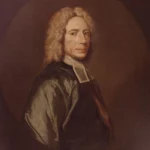Biblical Truth: Heaven will be full of the glory of God’s presence and blessings with none of the problems of this present world.
New: Rev. 21:1-5.
[1] Then I saw a new heaven and a new earth; for the first heaven and the first earth passed away, and there is no longer any sea. [2] And I saw the holy city, new Jerusalem, coming down out of heaven from God, made ready as a bride adorned for her husband. [3] And I heard a loud voice from the throne, saying, "Behold, the tabernacle of God is among men, and He will dwell among them, and they shall be His people, and God Himself will be among them, [4] and He will wipe away every tear from their eyes; and there will no longer be any death; there will no longer be any mourning, or crying, or pain; the first things have passed away." [5] And He who sits on the throne said, "Behold, I am making all things new." And He said, "Write, for these words are faithful and true." [NASU]
[1-2] John is now given a view of the dawn of the everlasting day of God’s rule of peace and righteousness. The judgment is past, the world is purged, and universal joy and harmony prevail. But what is the meaning of the new heaven and new earth that he sees? In what sense are they new? And what are we to understand by the information that the first heaven and the first earth passed away? Does this terminology imply the annihilation of the present world and the introduction in its place of a completely new creation? There are weighty considerations which lead us to conclude that this is an incorrect interpretation. For one thing, Paul speaks of the present creation as waiting eagerly for the revealing of the sons of God when it will be set free from its slavery to corruption [Rom. 8:19-22]. This indicates that the new heaven and new earth will be creation renewed and brought to the glorious consummation for which it was always intended. This is the sense, too, of the new birth or new creation of a person in Christ: if anyone is in Christ, he is a new creature; the old things passed away; behold new things have come [2 Cor. 5:17]. The terminology is the same as in the passage before us, but it is obvious that the man-in-Christ who as such is a new creature or creation has not passed away with the old, but is the same creature as before, only now renewed and set free. He is now created in Christ Jesus [Eph. 2:10]. The transition from being ‘in Adam’ to being ‘in Christ’ is the transformation of the old into the new. For another thing, for God to discard or annihilate the present creation would testify to the failure of His purpose in bringing it into being, and this in turn would contradict the doctrine of the being of God, whose purposes, by definition, are incapable of meeting with failure. God’s purpose as Creator is seen in the fact that all things were created in the Son and through Him and for Him [Col. 1:16], and consequently all things have the purpose of their creation fulfilled in the Son. Accordingly, by the new heaven and new earth we understand the realization of the period of restoration of all things about which God spoke by the mouth of His holy prophets from ancient time [Acts 3:21]; of the achievement of what Christ called the rebirth or regeneration, when the Son of Man will sit on His glorious throne [Matt. 19:28]. As the vision unfolded John observed that there is no longer any sea. The disappearance of the sea does not imply that it was regarded as evil in itself, but rather that its aspect was one of hostility to man. It held in its depths the bodies of unnumbered persons who had perished in it waters (hence the concept of the sea giving up its dead at the last judgment, 20:13). Its restless turbulence was a picture of the instability of the wicked [Isa. 57:20f.]. In contrast to the world-city known as Sodom and Egypt and
[3-4] An unidentified loud voice from the throne now interprets the significance of the heavenly city for the believers. Again, themes drawn from the Old Testament predominate. Indeed, the covenant established in Sinai is now fulfilled [see Lev. 26:11-12]. The first part of the promise, the tabernacle of God, is a virtual translation of Shekinah, typified in the cloud and pillar of fire at the exodus and symbolized in both the tabernacle and the temple. Most of all, Shekinah meant communion between God and His people, and it was finalized in two stages: first, when the Word became flesh, and dwelt among us [John 1:14], and second here as the Shekinah dwells with His people. In Christ the Shekinah became incarnate, and here communion between God and His people becomes physical and absolute, as God will dwell among them. God will no longer dwell high and lifted up above His people but will now tabernacle in their midst. Now we see the final and eternal fulfillment of the covenant promise (I will be their God, and they will be my people) as God’s people begin actually to live with Him. After the eternal covenant is presented, the benefits belonging to the saints who form and inhabit the new heaven and new earth are presented [4]. They center on the peace and joy God will give His people. First, God will wipe away every tear from their eyes. Second, God will remove the sources of sorrow: death, mourning, dying, or pain. There will be everlasting joy and bliss, for the debilitating effects of sin and suffering have been taken away. The concluding thought ties it all together: this has occurred because the first things have passed away.
[5] Now He who sits on the throne speaks. The switch to the present tense (I am making) after the future tense in verses 3 and 4 guarantees God’s future re-creation of the heavens and earth. It is the prophetic present, speaking as if something in the future is currently happening, thus emphasizing its certainty. The purpose of for these words are faithful and true is to help the reader understand the truthfulness and importance of the message. God’s message partakes of His attributes of faithfulness and truthfulness. In other words, the new creation is certain because the faithful and true God has guaranteed it.
Glorious: Rev. 21:22-27.
[22] I saw no temple in it, for the Lord God the Almighty and the Lamb are its temple. [23] And the city has no need of the sun or of the moon to shine on it, for the glory of God has illumined it, and its lamp is the Lamb. [24] The nations will walk by its light, and the kings of the earth will bring their glory into it. [25] In the daytime (for there will be no night there) its gates will never be closed; [26] and they will bring the glory and the honor of the nations into it; [27] and nothing unclean, and no one who practices abomination and lying, shall ever come into it, but only those whose names are written in the Lamb’s book of life. [NASU]
[22-23] There is no temple, or sanctuary in the holy city, for, in one respect, it is itself all sanctuary. Its structure, as seen in the vision, in the form of a cube recalls the fact that the dimensions of the Holy of Holies, the inner sanctuary of the presence of God in the Mosaic tabernacle of old, were those of a cube, and that that sanctuary was a copy and shadow of the heavenly things [Heb. 8:5]. Moreover, the construction of this true sanctuary is not from material blocks, not even precious stones and metals, but the persons of the redeemed multitude, who, like living stones, are being built up as a spiritual house for a holy priesthood, to offer up spiritual sacrifices acceptable to God through Jesus Christ [1 Peter 2:5]. But the city is not a holy sanctuary because the redeemed are its inhabitants, except in a secondary sense, but because it is pervaded by the presence of God Himself and thus is absolutely holy, and because all blessedness and all grace come from Him who is Lord over all both as Creator and as Redeemer. And the immediate presence of God removes any need of light as it were from outside. The uncreated light that is inseparable from God Himself will ceaselessly illumine that city; consequently, there will be no need of the light of the sun or of the moon to shine on it. His glory provides its light, and its lamp is the Lamb whose life is the light of men [John 1:4], and whose glory is one with the eternal glory of the Father [John 17:5] – a foreglimpse of which was seen by the privileged apostles on the mount of transfiguration [Matt. 17:2].
[24-27] This assertion regarding the holy city that the nations will walk by its light, and the kings of the earth will bring their glory into it, announces the fulfillment of the ingathering of a worldwide harvest of the gospel, as predicted in Isaiah 60:3. The scene will be one of rejoicing and splendor as the citizens of the new Jerusalem will bring the glory and the honor of the nations into it, for in this multitude of the redeemed assembled in everlasting blessedness and harmony the wonderful potential of man’s giftedness by virtue of his creation in the divine image will, in the renewal of creation, blossom forth in unimpaired fullness. Thus the glory and honor with which the nations are endowed will be ascribed entirely and gratefully to the glory and honor of Almighty God their Creator and their Redeemer. The assurance that the city’s gates will never be closed conveys the sense of the perfect freedom of the saints in glory resulting from the perfect attunement of their wills to the will of God, in whose image they are formed and to which they are now fully conformed. As the new heaven and new earth will have been purged of all evil and ungodliness, there will be no hostile power to threaten the peace of the city and cause the closing of its gates. This, once again, will be the coming to pass of the situation envisaged in Isaiah’s prophecy: Your gates will be open continually…. No longer will you have the sun for light by day, nor for brightness will the moon give you light; but you will have the Lord for an everlasting light, and your God for your glory [Isaiah 60:11,19]. That the gates of the city will be perpetually open does not mean that they will be open to evil and ungodliness. How could it be the holy city if it were all-inclusive in this sense? That there is indeed exclusion is plain from the declaration that nothing unclean, and no one who practices abomination and lying, shall ever come into it. That is, to say, there will be absolutely no place in it for unholiness and perversion and untruthfulness, which are the hallmarks of Satan and his followers. But there will also be no danger of evil things and those who practice them entering in through the ever-open gates, since they will have been eternally excluded and indeed eliminated by the purgation of the world in final judgment. The inhabitants of the holy city will be only those whose names are written in the Lamb’s book of life, and as such have been called, justified, and glorified by the grace of God who predestined them to be conformed to the image of His Son [Rom. 8:29-30]. Thus yet another promise of the ancient prophecy is brought to realization: Then all your people will be righteous [Isaiah 60:21].
Joyful: Rev. 22:1-5.
[1] Then he showed me a river of the water of life, clear as crystal, coming from the throne of God and of the Lamb, [2] in the middle of its street. On either side of the river was the tree of life, bearing twelve kinds of fruit, yielding its fruit every month; and the leaves of the tree were for the healing of the nations. [3] There will no longer be any curse; and the throne of God and of the Lamb will be in it, and His bond-servants will serve Him; [4] they will see His face, and His name will be on their foreheads. [5] And there will no longer be any night; and they will not have need of the light of a lamp nor the light of the sun, because the Lord God will illumine them; and they will reign forever and ever. [NASU]
[1-2] What John sees in this vision is
[3-5] Another link with the account of the creation and fall of man in the opening chapters of Genesis is the declaration that in the holy city there will no longer be any curse, for this implies the removal of the curse which man brought upon himself through his sin and the fulfillment of Zechariah’s prophecy: there will no longer be a curse, for Jerusalem will dwell in security [Zech. 14:11]. This, again, is due entirely to the Lamb’s propitiatory self-offering of Himself for us on the cross, itself the symbol of the curse. And that, further, is why the throne of God and of the Lamb will be in the new Jerusalem, and be there as the inexhaustible fount of grace and blessing to its citizens who have been saved from the curse and condemnation. These are His bond-servants who will serve Him as they perform His will, and in doing so joyfully fulfill the purpose of their creation in the divine image. Clothed in robes of holiness that have been washed and made white in the blood of the Lamb, they are before the throne of God and serve Him ceaselessly in His temple [7:14-15]. Moreover, they will see His face. This is the height and summation of all blessedness, not only to be in God’s presence but actually to see His face, that is, to know the perfection of harmony and fellowship with their Creator and, thanks to His redeeming grace, to stand before Him with unhesitating confidence and commune with Him in total love. This relationship of blissful immediacy will everlastingly fulfill the longing expectation of the Lord’s faithful servants in all generations. Seeing the Lord’s face means also the dispelling of all doubt and uncertainty and ignorance: For now we see in a mirror dimly, but then face to face; now I know in part, but then I will know fully just as I also have been fully known [1 Cor. 13:12]. To see His face indicates a personal relationship of absolute trust and openness. This is confirmed by the assertion that His name will be on their foreheads, for this signifies not only their preciousness to Him, to whom they gladly belong but also that in the multitude of the redeemed who populate the holy city there will be none who are unknown and unloved, none whose identity is lost in the crowd, and none who miss seeing Him face to face. The information that the Lord’s servants will see His face takes us more deeply into the reason why there will be no more night and no more need of light from lamp or sun. This will be the full and unveiled experience of what Paul meant when he wrote that God has shone in our hearts to give the Light of the knowledge of the glory of God in the face of Christ [2 Cor. 4:6]. This is the light that is absolute. In this light the Lord’s redeemed will reign forever and ever. It is the Lord who reigns supreme over all; their reigning is by virtue of the grace that has united them to the Lord. He alone is King of kings and Lord of lords [17:14; 19:16]; their kingship is in and through Him who loves them and freed them from their sins by His blood [1:6; 5:10]. Their reigning is reigning with Him [2 Tim. 2:12], and that explains why it is for ever and ever.
Questions for Discussion:
1. What is the meaning of the new heaven and new earth; of the new Jerusalem? What are the benefits or blessings for those living in the new Jerusalem? What gives us certainty that the new creation will happen?
2. Why is there to temple in the new Jerusalem? What is the significance of the gates to the holy city being always opened?
3. What picture of the holy city does John draw for us in 22:1-5? What do the river and tree symbolize?
4. What does it mean that the saints will see God’s face?
References:
The Book of the Revelation, Philip Hughes, Eerdmans.
Revelation, Grant Osborne, Baker.

















